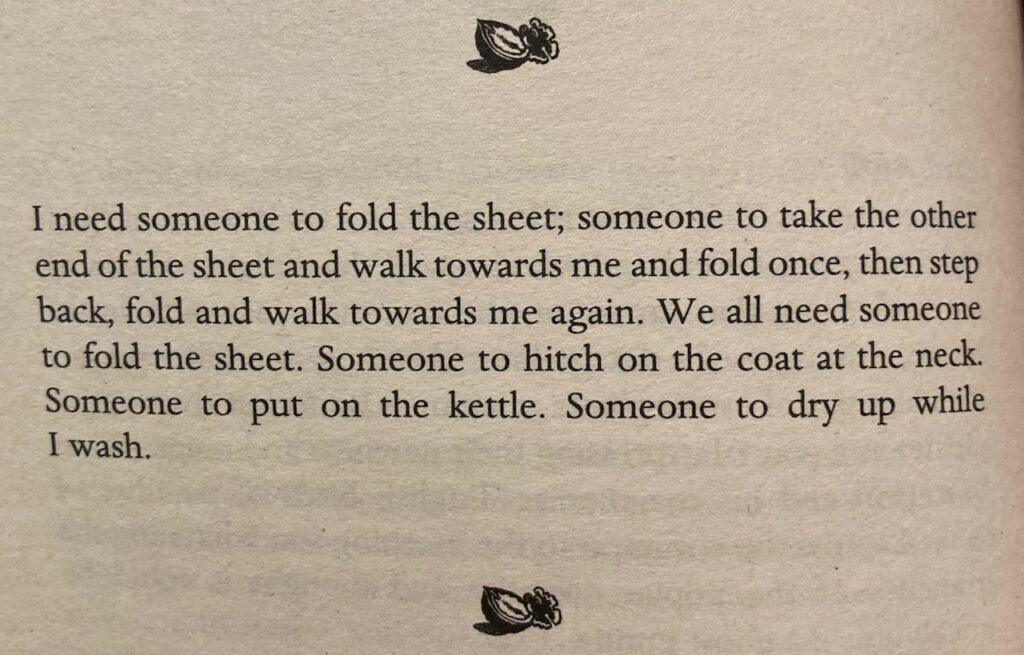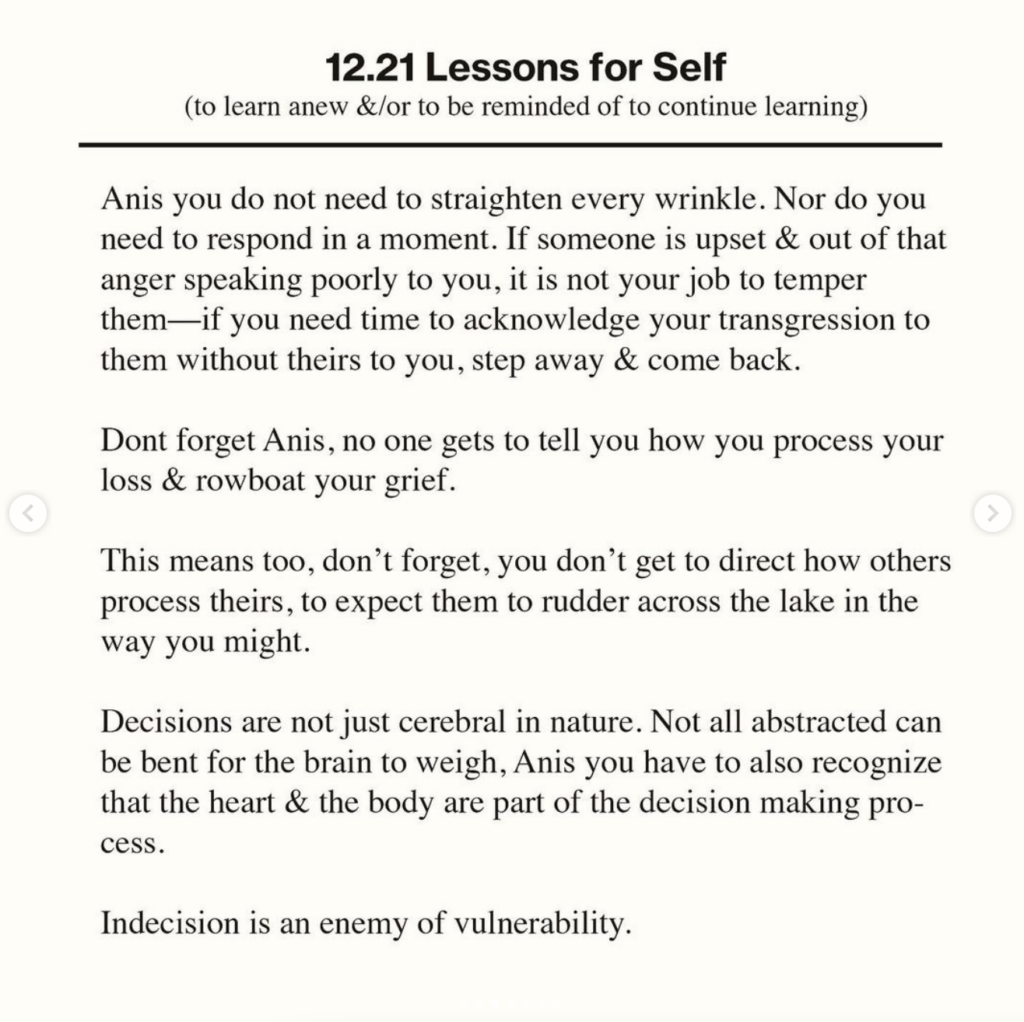
I’d put down Notes from Walnut Tree Farm for a spell, but yesterday I picked it back up and Deakin immediately ran a saber right through my heart.
The online home of Adventure Cartoonist Lucy Bellwood

I’d put down Notes from Walnut Tree Farm for a spell, but yesterday I picked it back up and Deakin immediately ran a saber right through my heart.
Shing wrote a very perfect post-mortem about their epistolary keepsake game, Remember August. It is personal and statistical all at once, just as much about the logistics of running a very unique kind of mail-based narrative as it is about the decline of once-cherished relationships. I strongly recommend reading the whole thing, but this sentence in particular hit me in the chest:
I felt a little bit like by making games like this, I was tricking strangers and friends into telling me that I would be okay.
I feel this so keenly when I listen to messages from The Right Number. Much like the handwritten letters players posted during their interaction with Remember August, the human voice carries so many layers of intimacy. The current prompt is about refuges, and people have been calling to describe, in gorgeous detail, their chosen temples and cherished landscapes. I lie in the dark and let their accents and words wash over me, one by one. A house in the mountains of northern New Mexico. A warm beach. A particular couch in a family room.
I never listen to too many at once, so there’s actually a backlog of messages I haven’t gotten to yet, but they feel timeless. There’s no response forthcoming, just the knowledge that I’ll listen to them and keep them safe somehow. And in return, they keep me safe, too.
I’m starting to think I have a knack for digital bibliomancy—an uncanny ability, given the vastness and improbability of the internet, to stumble upon just the right input at just the right time.
To set the scene: I finished watercoloring my hourly comics tonight, and have been thinking a great deal about repetition and sameness and grief and depicting the people and places you love. I’ve also been picking apart why, having made this intimate portrait of what it looks like to care for my aging father day in and day out, I feel more comfortable with the idea of sharing the comic online with an audience of thousands than I do showing it to my own mother.
Tonight, the knack looked like going on Twitter to follow someone I’d just met through a private Slack, reading the last few tweets in her timeline, seeing a link she’d posted in early 2021 to a now-archived blog, clicking through and laughing at the blog and then feeling like the curator‘s name was familiar, realizing I’d read a book she’d cowritten some years ago, perusing a list of essays on her website, and finally clicking on the first one because it was about “death, mourning, the artist Pierre Bonnard, and how to make a vital life out of repetitions and sameness, rather than newness and adventure.”
Here she comes:
There is a deep, dark, endless feeling to representing one’s insides. What appears in your writing changes the objects and people around you; they take on the qualities of how you portrayed them. A friend drawn ugly becomes ugly. A life drawn sweet becomes more sweet. To draw your life is to attempt to transform it with your magic. Your life invariably comes to resemble the depiction layered on top of it, because you now look at it through the lens of how you depicted it. This is why some artists run away from their lives; because who among us can live forever in our own dream?
I threw that bold in there, because that was the point I sat up straight and thought “OH SHIT.”
Of Bonnard’s working method the curator Dita Amory wrote, “Only when he felt a deep familiarity with his subject—be it a human model or a modest household jug—did he feel ready to paint it…. Asked if he might consider adding a specific object to his carefully circumscribed still-life repertoire, he demurred, saying, ‘I haven’t lived with that long enough to paint it.’”
I have repeated that phrase in my mind so often since encountering it, twisting it this way and that: I haven’t lived with it long enough to paint it. I haven’t lived with it long enough to write about it. I haven’t lived with it long enough to love it. What does it mean to distrust the novelty of experience? To say instead that what one needs in order to create are not new things—not new grand adventures, not new wives or husbands or cities—but the same thing over and over again until a Platonic form of the thing builds up in the mind and becomes the model for what is written about, or painted?
There were many moments in the course of penciling and inking my hourlies that I found myself drawing things without reference and feeling surprised—as if I haven’t interacted with them daily my entire life. As if I haven’t seen the exact pattern of my father’s behaviors day in and day out for an entire year.
I keep thinking about fixed action patterns in animals.
I keep thinking about what is being cemented in me during this season.
We all know that there is a quality of duration that must be harnessed, which seems to be not only a way of working against the fickle intrusion of inspiration but the only way of living after a certain age: understanding the humdrum repetitions of life to be a kind of balance; refusing to chase the tsunami of inspiration that comes with each new falling in love, each new city; having only the same walls around us, and the same plates, and only one wife, who will always dislike our friends, and spend day after day in the bath.
(I even have a wife who loves the bath! It’s not relevant to the main thrust of this, but I do love my wife and my wife loves the bath.)
There it is: the delight of finding something that speaks so precisely to the moment I’m in—down to the second. And then the wondering about whether reading it on any other day would’ve left me cold.
(The first time I read Ali Smith I bounced off her work entirely. And now I’m reading everything of hers I can get my hands on.)
Walking in the forest with my dog a few weeks after my father died, I noticed the green of the fir trees; the colors were so muted and beautiful. And up above was a flat gray sky, easy to look at, the sun dimmed at midday by a thick layer of clouds. All I could see were the colors in nature and their perfect harmony. I could have stood there staring for much longer if my dog hadn’t been impatient, and if my shoes hadn’t been wet. Everything was dripping, the previous day’s snow already melting. And because I felt in that moment as if I had never really looked at colors before, I stood wondering beneath the shadowless sky whether, when my father died, the spirit that had enlivened him passed into me, for I had held him as he died; as perhaps when his father, a painter, died, his spirit went into my father, so that now I had the spirit of my father and the spirit of my grandfather both inside me. And I wondered whether this influence—the spirit of my painter grandfather inside me—was why I was suddenly noticing colors.
What a gift.
I’m wrestling with the letter I want to write to introduce my 2020 100 Day Project when I release it later this month. I’m feeling the pressure to get it just right. To say it just so. (Sound familiar? I keep finding different elements of this project to obsess over as a way to avoid sharing it. Go figure. Just share it, Lucy.)
I poked my head into Instagram briefly this morning and found Anis sharing a project that has its roots in a much older project and is now reemerging:
Back in 2014/2015 I was in a place of heavy loss, a place of relearning, rewiring, reforming my self, & began writing down & sharing online these monthly wisdoms/lessons for my self to learn, think on, & try to remember. Have wanted to return to this for years now, & being now in some months of heavy reflection seemed a good time for this returning. Here’s things I put down last month for me to hold & turn over & try to remember.
Here’s one:

This subtitle sings to me.
It’s a funny thing how we all begin turning toward the same subjects at the same times (or have already been turning for several years). Reminders. Permission. Speaking to the self as the self, but at a removal from the self. This is the energy of the thing I’m about to release, too. Seeing it reflected in these words from my brilliant friend fills me with compassion and energy and, okay, a little envy, too. I have to elbow myself in the psychic ribs as if to say “Hey. Cut it out. There’s no race here, ya dingbat.”
On another slide, Anis writes:
I sometimes use vulnerability w/self to avoid vulnerability w/others. I wear my heart, but wearing can be a costume.
This is one of the things that drives me away from sharing such a personal thing in public. I want it to be known (I want to be known), but not in a space where I’ve traditionally used perceived vulnerability to mask real connection.
The greatest pleasure I’ve gotten from this project has been pressing the physical prototype (or the Dropbox folder of images) into the hands of trusted friends, and then talking about it with them. That’s energy I want to preserve moving forward. This connection. This depth.